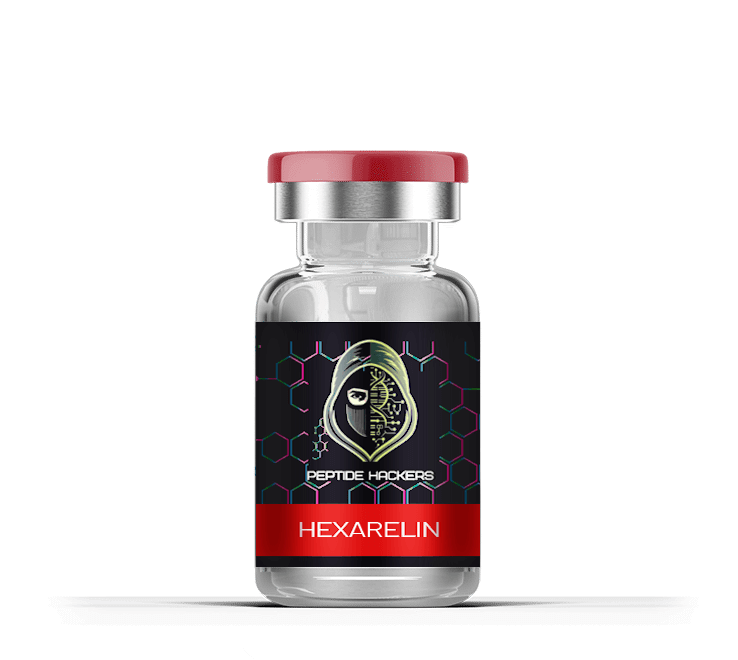Understanding Peptide-Based Skincare Products
Peptide-based skincare products have gained attention in the cosmetic industry. This article explores what peptides are as cosmetic ingredients and discusses published research on their properties. We'll examine PeptideHackers' Anti-Wrinkle Peptide Cream as a cosmetic product and provide educational information for those interested in cosmetic formulation.
This is educational information only. Individual results vary. NOT medical advice.
What Are Peptides in Cosmetic Products?
Understanding Peptides as Cosmetic Ingredients
Amino acids are building blocks of proteins, and peptides are chains of these amino acids. In cosmetic science, peptides are studied as ingredients that may interact with skin proteins like collagen and elastin.
Published research examines how peptide ingredients in topical cosmetic formulations may support skin's natural processes. Cosmetic peptides are studied for their potential role in skincare formulations.
Educational information only. Individual results vary.
Published Research on Peptide Cosmetic Ingredients
Scientific literature examines various potential properties of peptide cosmetic ingredients:
- Firming Properties: Studies examine how peptides may affect skin's appearance
- Hydration Support: Research examines peptides' role in supporting skin barrier function
- Cosmetic Benefits: Published studies examine peptides in anti-aging cosmetic formulations
- Ingredient Compatibility: Research examines peptides' compatibility with various skin types
Research observations only. Individual results vary. NOT medical claims.
The Science Behind Peptide Cosmetic Formulations
Understanding Skin Barrier Support
Published research examines how cosmetic ingredients may support skin's natural barrier function. Environmental factors can affect skin appearance, and cosmetic formulations are studied for their potential supportive role.
Peptide cosmetic products are formulated to support skin hydration and may complement overall skincare routines. This is particularly relevant for various skin types.
Educational information only. NOT medical advice or dermatological recommendations.
Research on Cosmetic Peptide Properties
Scientific literature examines how peptide ingredients may affect skin appearance. Research explores peptides' role in cosmetic formulations designed to support skin's natural properties.
Research information only. Individual results vary.
Amino Acids in Cosmetic Science
Cosmetic science research examines amino acids' role in skincare formulations. When formulated in cosmetic products, amino acids are studied for their potential benefits in skincare routines.
Educational information only. NOT medical claims.
Understanding Peptide Cosmetic Ingredients
Common Peptides in Cosmetic Formulations
When examining peptide cosmetic products, here are commonly studied peptides in cosmetic science:
- Matrixyl 3000: A cosmetic ingredient composed of palmitoyl tripeptide-1 and palmitoyl tetrapeptide-7, studied in cosmetic formulations
- Argireline: A hexapeptide cosmetic ingredient examined in skincare research
- Pepha-Tight: A peptide cosmetic ingredient studied in skincare formulations
- Acetyl Hexapeptide-51: A cosmetic peptide ingredient examined in skincare research
- Copper Tripeptide: A peptide ingredient studied in cosmetic science literature
Understanding these cosmetic ingredients can help when selecting skincare products based on formulation composition.
Educational information only. Individual results vary. NOT medical advice.
About PeptideHackers' Anti-Wrinkle Peptide Cream
PeptideHackers' Anti-Wrinkle Peptide Cream is a cosmetic product formulated with various peptide ingredients. Here's educational information about this cosmetic formulation:
Multi-Peptide Cosmetic Formulation
This cosmetic cream is formulated with multiple peptide ingredients, including copper peptides (like GHK-Cu), Matrixyl 3000, SNAP-8, and Palmitoyl Tripeptide-5, combined in a cosmetic formulation.
Individual results vary. This is a cosmetic product, not a medical treatment.
Hydration Ingredients
This cosmetic formulation includes hyaluronic acid, ceramides and other hydrating ingredients commonly found in skincare products.
Antioxidant Cosmetic Ingredients
This formulation includes antioxidant ingredients like vitamin C and resveratrol commonly studied in cosmetic science.
Product Formulation
This cosmetic product is formulated for use with various skin types including sensitive, combination, and dry skin.
Individual results vary. This is a cosmetic product. Consult a dermatologist with specific skin concerns.
Educational Cosmetic Formulation Information
For educational purposes, here's information about peptide cosmetic formulation:
Example Cosmetic Formulation Components:
IMPORTANT DISCLAIMER: This information is for educational purposes only about cosmetic ingredient formulation. Not professional formulation advice. Proper cosmetic formulation requires expertise in cosmetic chemistry, preservation, safety testing, and regulatory compliance. Always consult qualified cosmetic chemists and follow all applicable regulations.
Oil Phase (~25 g):
- Various carrier oils commonly used in cosmetic formulations
- Lipid-soluble ingredients
- Vitamin derivatives used in cosmetics
Water Phase (~55 g):
- Distilled water base
- Water-soluble cosmetic ingredients
- Thickening agents used in cosmetics
Cool-Down Phase (~5 g):
- Heat-sensitive cosmetic ingredients
- Peptide ingredients
- Preservative systems
- Fragrance components
CRITICAL SAFETY NOTE:
- Cosmetic formulation requires proper training and expertise
- Adequate preservation is essential for product safety
- Proper pH adjustment is necessary
- Stability and compatibility testing required
- Regulatory compliance essential for any cosmetic products
- Consult qualified cosmetic chemists before attempting formulation
This is educational information only. NOT professional formulation guidance.
Conclusion
For those interested in peptide-based cosmetic products, establishing a skincare routine with products like PeptideHackers' Anti-Wrinkle Peptide Cream may be of interest. This cosmetic product is formulated with various peptide ingredients and hydrating components.
Whether you choose pre-formulated cosmetic products or are interested in cosmetic formulation science, peptides represent an area of interest in skincare science.
IMPORTANT REMINDERS:
- Individual results vary - No cosmetic product works the same for everyone
- This is a cosmetic product - Not a medical treatment or drug
- Consult professionals - See dermatologists for medical skin concerns
- Patch test products - Test new products on small areas first
- Not medical advice - This article is educational only
FINAL IMPORTANT DISCLAIMER
This content is for educational and informational purposes only about cosmetic products and ingredients.
NOT MEDICAL ADVICE. NOT DERMATOLOGICAL TREATMENT RECOMMENDATIONS. NOT GUARANTEED RESULTS.
Individual results vary significantly. This discusses a cosmetic product, not a medical treatment. Consult qualified dermatologists or healthcare providers for medical skin concerns, conditions, or before starting any new skincare regimen.
No cosmetic product can "cure," "treat," or "prevent" any disease or medical condition. Cosmetic products are intended to cleanse, beautify, or alter appearance, not treat medical conditions.
Always perform patch tests before using new skincare products. Discontinue use if irritation occurs and consult a healthcare professional.
This article does not constitute medical, dermatological, or professional skincare advice.
Scientific References
- Chan et al., "Cosmeceuticals in photoaging: A review," Skin Research and Technology, vol. 30, no. 1, pp. 3-12, 2024. doi:10.1111/srt.13730
Summary: This article provides a review of cosmeceutical ingredients including peptides in skincare formulations. - Kachooeian et al., "Matrixyl Patch vs Matrixyl Cream: A Comparative In Vivo Investigation of Matrixyl (MTI) Effect on Wound Healing," ACS Omega, vol. 7, no. 37, pp. 38927-38934, 2022. doi:10.1021/acsomega.2c02592
Summary: The study investigates Matrixyl, a peptide cosmetic ingredient, in laboratory research. - Kruger et al., "Efficacy of Topical Hydroxypinacolone Retinoate-Peptide Product Versus Fractional CO2 Laser in Facial Aging," Journal of Cosmetic Dermatology, vol. 23, no. 3, pp. 407-412, 2024. doi:10.1111/jocd.16621
Summary: This research examines topical peptides in cosmetic applications. - Mao, "Frontiers in Skin Rejuvenation: Recent Advances in Anti-Aging Skincare Technologies Based on Proteins, Peptides, and Peptide Derivatives," Modern Health Science, vol. 8, no. 1, pp. 69-80, 2025. doi:10.30560/mhs.v8n1p69
Summary: The article discusses peptide derivatives in cosmetic formulations. - Ngoc et al., "Insights into Bioactive Peptides in Cosmetics," Cosmetics, vol. 10, no. 4, Article 111, 2023. doi:10.3390/cosmetics10040111
Summary: This paper reviews bioactive peptides as cosmetic ingredients. - Gold et al., "Efficacy and Tolerability of a Hyaluronic Acid-Based Serum and a Peptide-Rich Cream for the Face and Neck in Subjects with Photodamaged Skin," Journal of Cosmetic Dermatology, 2022. doi:10.1111/jocd.14981
Summary: The research evaluates a peptide-rich cosmetic cream formulation. - Schagen, "Topical Peptide Treatments with Effective Anti-Aging Results," Cosmetics, vol. 4, no. 2, Article 16, 2017. doi:10.3390/cosmetics4020016
Summary: This article examines topical peptides in cosmetic applications. - Baker, "Peptides in Skincare: Their Regenerative Benefits," Journal of Aesthetic Nursing, vol. 13, no. 3, pp. 123-128, 2025. doi:10.12968/joan.2024.0056
Summary: This review discusses peptide categories in cosmetic formulations.
All references are from published literature for educational purposes only. NOT endorsements of medical or treatment claims.





